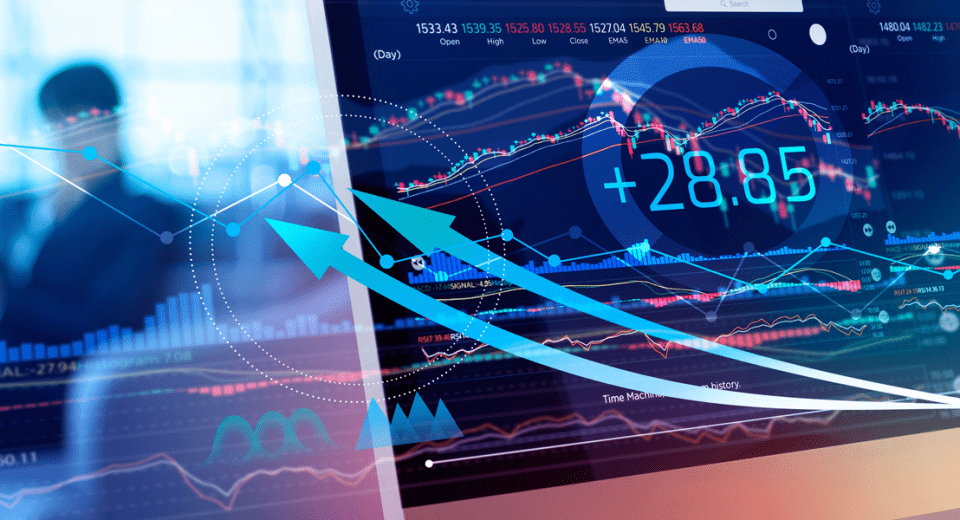On July 31, 2019, the EUR/USD pair experienced strong bearish sentiments, following the US Federal Reserve announcing its monetary policy changes, which was much less dovish than expected. The US Dollar (USD) rose to its highest value since May 2017, while the Euro/US Dollar pair plunged below the 1.11 mark, its lowest in more than 26 months. Of course, the pair did recover, ending the day with a loss of 0.4%.
The most liquid currency pair in the world, the EUR/USD does see huge trading volumes, which is why it offers multiple trading opportunities even through a single session. But before you put your hard-earned money on this pair, there are some basics things you should know.
The Euro
The official currency of the European Union, the Euro (EUR) is the second most traded currency in the world, while also being the largest reserve currency. Launched in 1999, the EUR has been adopted by 19 of the 28 EU member states.
When trading any forex pair that includes the EUR, it should come as no surprise that traders keep a close watch on the announcement by the European Central Bank (ECB), since changes in its monetary policies have a direct impact on the value of the Euro.
Apart from the ECB’s interest rate and economic outlook announcements, key economic data from the Eurozone nations, such as unemployment number, GDP and Balance of Trade, impact the EUR and, therefore, the EUR/USD rates.
The US Dollar
The US Federal Reserve (Fed) decides on the amount of USD in circulation, taking action via the regular meetings of its Federal Open Market Committee (FOMC). The Fed is the US Central Bank, which means that its decisions influence the value of the USD. So, while trading a currency pair that includes the US Dollar, it makes sense to keep an eye on the Federal Funds Rate and interest rate statements released by the US Fed.
Another key report that significantly impacts the value of the USD is the Nonfarm Payroll numbers, released by the US Bureau of Labor Statistics on the first Friday of each month. This report includes unemployment data associated with all non-agricultural sectors of the US economy and can lead to volatility in the EUR/USD exchange rates.
When to Trade EUR/USD?
The most active time for the EUR/USD pair is when both the London and the New York sessions are in progress. Both markets are simultaneously open between 8:00 am GMT to 10:00 pm GMT, Monday through Friday. However, it is between 7:00 am GMT and 8:00 pm GMT that the EUR/USD pair sees the greatest movement in price.
After this, the movement begins to taper off, unless there is an important economic release or monetary policy statement. These announcements could lead to price volatility.
What Trading Strategies Work Best?
The key to long term trading success is to have a robust strategy and to stick to it, regardless of temptation or fear. Trading the EUR/USD pair is not different. Traders have found that there are three strategies that tend to work well for the most liquid forex pair in the world.
1. Trade the Pullback
The EUR/USD pair, like any other forex pair, trends both up and down, taking the price in what is called a “positive feedback loop,” which generates multiple trading opportunities. The problem is that these price moves are quite rapid, and, influenced by the law of demand and supply, the momentum of price moves could also fizzle out or move suddenly in the opposite direction.
So, the pullback strategy essentially focuses on just such counter-trend movements, by identifying where the support and resistance levels would be when the price trends swings back in the original direction. These levels often return to the previous highs or lows, while also returning to the key levels identified through Fibonacci Retracements and moving averages.
2. Trade Breakouts and Breakdowns
The EUR/USD pair tends to move up and down within a confined range for prolonged timeframes, which generates well-defined trading ranges. These trading ranges eventually lead to new trends. It is important to remain patient through the consolidation periods, since you might be able to identify low-risk points of entry when the support or resistance levels finally break, leading either to a robust rally or a sell-off.
Timing is the key to making the most of this strategy, where traders choose to buy breakouts and sell breakdowns. Entering too early can be risky, since the range might last and then trigger a reversal. On the other hand, late entry means that you run the risk of your trade being executed significantly above the new support level or significantly below the new resistance level. Traders sometimes attempt to reduce such risk by entering into partial positions when the forex pair either breaks out or breaks down and then adding to their position on the first minor retracement.
3. Trade Narrow Range Patterns
The EUR/USD pair often rises or falls within a narrow price range. The price bars thus created reduce volatility, while raising apathy levels. Such a quiet period could signal a good entry position to trade a breakout or breakdown. However, before entering a position when the price is trending within a narrow range, make sure to put tight stop-losses in place, just in case a major reversal occurs.
Very often, such narrow range-bound pricing leads to the formation of an NR7 bar, which indicates the narrowest range among the last 7 bars. This is a simple yet powerful pattern, which indicates that the price bars are likely to expand in a large breakout or breakdown. It can also become a low-risk entry point, given that the stop-loss can be placed very close to your entry price.
4. Trade EUR/USD via CFDs
Many traders choose to trade the forex pair through CFDs, given that this offers more trading opportunities. This is because you can trade both bullish and bearish markets, by choosing either to go long or short in the contract. In addition, you don’t need to own the currencies to be able to trade them, which means that you can enter trades with significantly lower capital.
Whether you choose a tried and tested strategy or develop one of your own, make sure that any trading decisions you take are based on robust technical and fundamental analysis. And, always keep an eye on data releases and geo-political developments, since they impact currency prices. Most importantly, don’t forget to put sound risk management measures in place before entering a trade.
Reference Links





